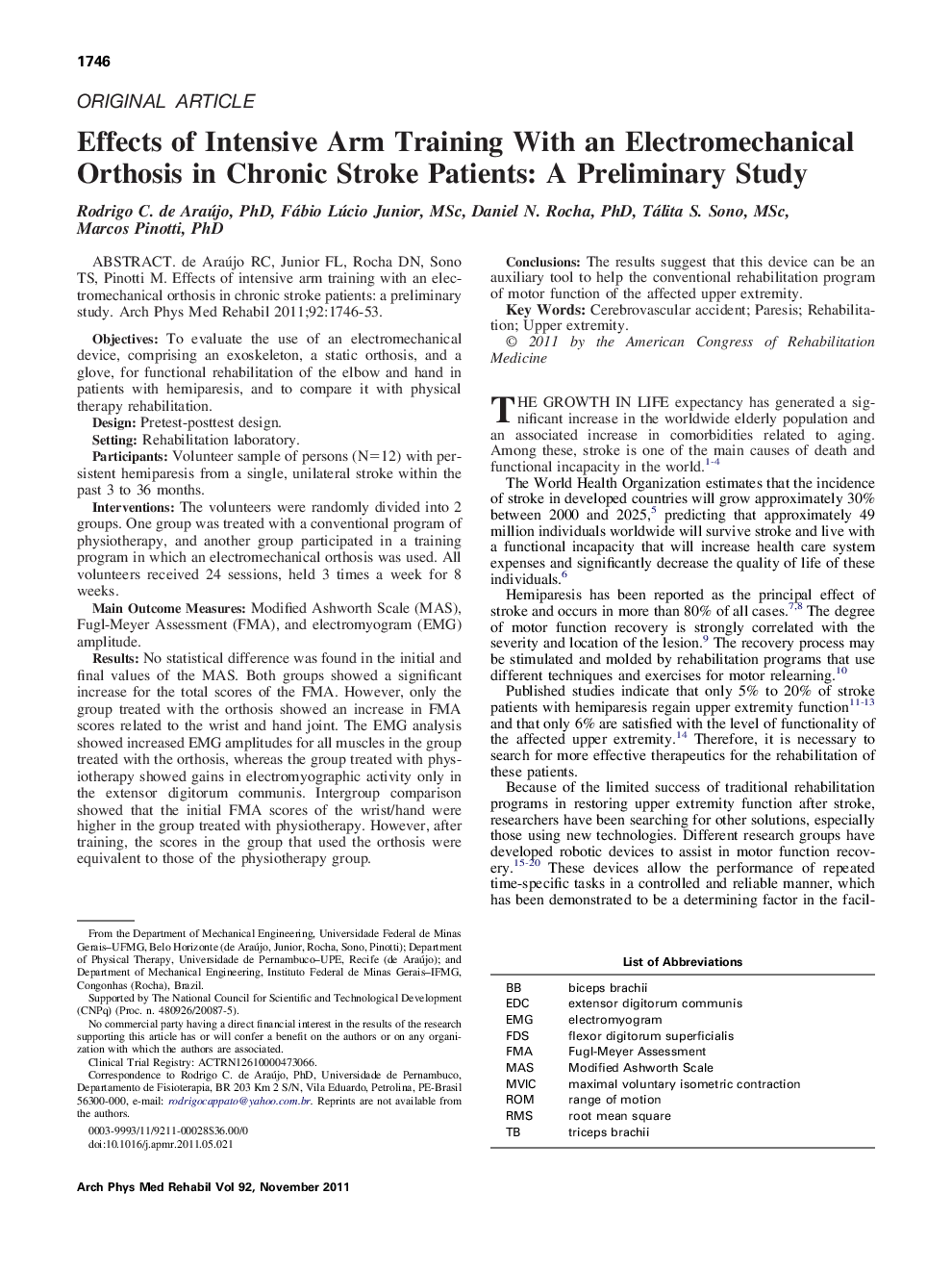| کد مقاله | کد نشریه | سال انتشار | مقاله انگلیسی | نسخه تمام متن |
|---|---|---|---|---|
| 3449945 | 1595733 | 2011 | 8 صفحه PDF | دانلود رایگان |

de Araújo RC, Junior FL, Rocha DN, Sono TS, Pinotti M. Effects of intensive arm training with an electromechanical orthosis in chronic stroke patients: a preliminary study.ObjectivesTo evaluate the use of an electromechanical device, comprising an exoskeleton, a static orthosis, and a glove, for functional rehabilitation of the elbow and hand in patients with hemiparesis, and to compare it with physical therapy rehabilitation.DesignPretest-posttest design.SettingRehabilitation laboratory.ParticipantsVolunteer sample of persons (N=12) with persistent hemiparesis from a single, unilateral stroke within the past 3 to 36 months.InterventionsThe volunteers were randomly divided into 2 groups. One group was treated with a conventional program of physiotherapy, and another group participated in a training program in which an electromechanical orthosis was used. All volunteers received 24 sessions, held 3 times a week for 8 weeks.Main Outcome MeasuresModified Ashworth Scale (MAS), Fugl-Meyer Assessment (FMA), and electromyogram (EMG) amplitude.ResultsNo statistical difference was found in the initial and final values of the MAS. Both groups showed a significant increase for the total scores of the FMA. However, only the group treated with the orthosis showed an increase in FMA scores related to the wrist and hand joint. The EMG analysis showed increased EMG amplitudes for all muscles in the group treated with the orthosis, whereas the group treated with physiotherapy showed gains in electromyographic activity only in the extensor digitorum communis. Intergroup comparison showed that the initial FMA scores of the wrist/hand were higher in the group treated with physiotherapy. However, after training, the scores in the group that used the orthosis were equivalent to those of the physiotherapy group.ConclusionsThe results suggest that this device can be an auxiliary tool to help the conventional rehabilitation program of motor function of the affected upper extremity.
Journal: Archives of Physical Medicine and Rehabilitation - Volume 92, Issue 11, November 2011, Pages 1746–1753